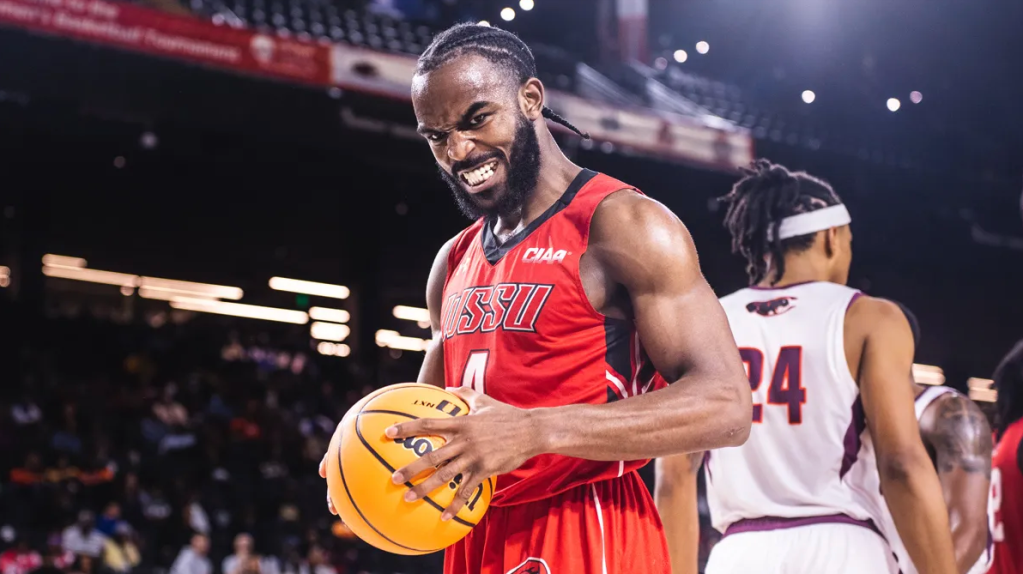
Source: kali9 / Getty
It’s 2021 by the time I’m writing this, and I still refuse to see Fruitvale Station.
It’s not that I haven’t had the opportunity or the free time. I just don’t think I want to watch that movie. Michael B. Jordan was said to give his best performance — and I’ll be cold dead in the grave before I ever turn that shit on. I’ve got several dozen films exactly like that for me, too. A number of them I’ve bought my ticket and stayed home to eat my soup like I knew what was good for me. I’m not sorry for it either. Not everything is bad just because you don’t like it. Not everything has to be abolished just because you cannot see the utility of it. I have the same mentality for all forms of Black cinema too. It’s the source of my confusion when we discuss Black trauma in Black media and how little space we give to our creators to work through whatever trauma they’re clearly reflecting in a drama.
Black Pain is a concept that encompasses all dramas that center the suffering of Black people. It’s been a particular talking point the last few years, but more so following Lena Waithe’s debut of Queen and Slim in 2019. What was marketed to audiences as a revolutionary love story and a radically shifted narrative on Police Brutality simply fell into scene after scene of suffering with the only ending feeling like the limitations of Black life, joy, and love. Since then, the trend of movies exploiting Black suffering seems to be a constant.
I can see why people have such an issue watching these sorts of things, though. Black Pain stories are traumatic. 12 Years a Slave is difficult to stomach. The opening of Selma is soul-shattering and twisted. Graphic scenes of rape and assault of Black men and women in media is triggering. And for years, Black pain has been the only thing we have been told to expect.
In 1915, Birth of a Nation told an incomplete narrative of Black America that kickstarted the future of racism in the modern world. Its framing is violent, depicting Black folk as sex-crazed psychopaths and sparking protests across the country resisting the bigotry of the era and became one of the earliest narrative films. Inevitably, this same genre became the vehicle for radical Black storytelling.
This hasn’t changed a century later. Them, while regarded as a visual masterpiece, is a horrifying tour of every conceivable means of harm a Black person might fear. Antebellum is no different, and Two Distant Strangers won an Emmy but confronts the inescapable cycle of fear Black people experience in the history of police brutality, excessive force, and the unmitigated fact that these attacks are a part of the peacekeeping the American public expects to be done.
I agreed, and I couldn’t budge on the topic. To me, there is too much Black talent, and too many dimensions left unexplored in Black storytelling for pain to be the only thing Black people can experience. Despite the opportunities made when Black Pain can become the centerpiece of the media public, its principals became the same issue with even “positive” stereotypes: that the harm is in the limitation of our potential and the fact the binary is implied. If all Black men have a big dick, then all we are capable of being are simple-minded sexual objects. If all we are is Black Pain, then all we are is suffering, when I find joy in my Blackness every day.
I was set in my standard. And then, Michaela Coel released her comedy-drama series, I May Destroy You on HBO Max, and I was forced to confront the ways even Pain operates in art. Coel’s I May Destroy You is vicious. Rape and Rape culture as a whole is uplifted by all men against all genders, and sexuality is directly confronted. Coel names her enemy and says out loud that it should be all of our enemy: but not at the expense of who we are as humans. The protagonist’s conflict the entire season is to write a memoir about her rape, trauma, and righteous anger, and in the end, she decides to write something more healing. It doesn’t provide a simple answer; it doesn’t make apologies for how even victims have encouraged the culture; it doesn’t yield in the face of what could be a conversation too large for them to take ownership of. Instead, it allows itself to be the most difficult thing possible to watch.
…there is too much Black talent, and too many dimensions left unexplored in Black storytelling for pain to be the only thing Black people can experience
And I found myself watching every episode, triggered and re-traumatized every moment, with the sole purpose of seeing the story make its conclusion on what is inevitably Coel’s perspective. See, Coel was herself sexually assaulted and the narrative as a whole, despite how universal the topic might seem, is deeply personal in where it was trying to go and the theme it was trying to capture. The entire premise of the show is inclusive for the purpose of showing how even Coel’s Blackness played into perpetuating Rape culture while also creating an atmosphere where she might suffer the most from it.
This series is Black Pain. And yet, it has to exist. I’ve changed my mind on Black Pain in the media, because I remembered that, inevitably, the Black stories most worthy of being told are the ones where Black people have to be the most honest with our dimensions: even the ones of pain.
Even the oldest of Black stories involving pain had the goal of sharing and enforcing our dimensions — particularly following the era where we weren’t even allowed to voice them on our own. Slave Narratives are among the oldest traditions in American literature. However, before we as a people were allowed to tell our own stories, White abolitionists made a show of borrowing experiences from freed, and runaway slaves that were often criticized for gross exaggeration of the conditions slaves lived in within their lives as human cattle. Or worse, stories like Aphra Behn’s Oronoko, the fictional account of an African prince and his beloved who are forced into slavery, transform the narrative of slavery instead into one of reform: that exploitation is not inherently harmful, but the treatment of human cattle that is the problem.
With the progression of Black lives among western civilization, Black slaves obtained the tools of western language to argue our own points on equal playing fields. Frederick Douglass, legendary abolitionist and author of Narrative of the Life of Frederick Douglass, an American Slave, taught himself how to read and write solely for the priority of his own experience and mind. And while controlling his narrative,
Douglass was incisive and unflinching in his observations. His pain became the vehicle that he targeted the terrible conditions of himself and our people. However, what people saw as merely a topical narrative was a story carefully sculpted to explore years of abuse and cruel shattering of his young spirit to make him more productive as a tool and not a person. This same agony became the vehicle for future works like Roots: the Saga of an American Family by Alex Haley, a catalogue of an African family from enslavement towards the current generation of Haley, which later became the hit miniseries of the same name. One scene depicts the brutality of lashing and the inhumane containment that were not just moments, but the everyday lives and futures of the enslaved. These moments were on screens of White America, who never had to directly and visually confront the silence on the American foundation or the falsehoods in the mythology of our nation. Blood and pain of Black men are on the screen, and it begins a conversation.
But, Roots debuted in the 1970s where Jim Crow still had its fangs in the throat of American culture and identity. In Philadelphia, four years before the debut of Roots, MOVE, originally the Christian Movement for Life, was started. Two years after Roots, MOVE had its first confrontation with the Philadelphia Police, a shootout killed one cop and injured more than a dozen firefighters and officers.
Blood and pain of Black men are on the screen and it begins a conversation.
Nine years later, MOVE was bombed by the city. The bomb killed six MOVE members, five children and after the City allowed the resulting fires to burn out of control: it destroyed sixty-five houses. After the incident, 250 civilians were left homeless. Numerous remains of children were shopped around discreetly between educational and research facilities in a cardboard box. In 2021, Dr. Thomas Faley, the Philadelphia Health Commissioner, resigned after admitting to cremating and the disposing of MOVE victims without family notification.
All of these acts were committed in silence, one of the many places where Black Pain is magnified. There is a point to why these explorations of Black Pain have to be shown because Black Pain is the reality and existence we navigate. If the purpose of Art to the Artist is to wrestle with the phantasmal entity we call our humanity, then for Black storytellers, racism is always in our setting even in spite of what people — Black viewers even — might desire in our programming.
Six years before the debut of Roots on ABC, Chloe Anthony Wafford Morrison, popularly regarded as Toni Morrison, debuted her first novel, Bluest Eye, the story of a small Black community in Ohio surviving the condition of racism and the circumstances of gender. Despite the fame obtained by Morrison in the current legacy, white readers thought Morrison did her readers a disservice by focusing on Black characters and issues, which infamously led to Morrison’s legendary discussion on the “white gaze” as an issue. However, this critique was not limited by race; particularly, Black men disparaged her work for her focus on the atrocities committed against Black women. In an era where Black works were meant to uplift the Community or expand the imagination of what Black people can possibly be, they chided Morrison for depicting Black men, in The Bluest Eye at least, as a rapist.
In a modern world, we need to remember that silence has more friction than outcry.
The documentary Toni Morrison: the Pieces of Me explored how she, in particular, was neglected and shrugged off by critics who could not fathom exactly why or where her stories belonged in a canon so heavily dominated by white people and particularly men. Her work either was too simple for the (white) reader to receive or overcomplicated issues many Black audiences likely dealt with on a consistent basis because Morrison herself went through it. Morrison’s work was challenged for the political statement, but ignored for the personal dynamics at hand.
The image of Black Pain became contentious, but Black Pain is what is the experience and the nerve of drama is to unlock the path towards joy no matter the obstacles that will stand in the way. In a modern world, we need to remember that silence has more friction than outcry. Black Pain isn’t always exploitation. I think considering that at least is allowable.
















